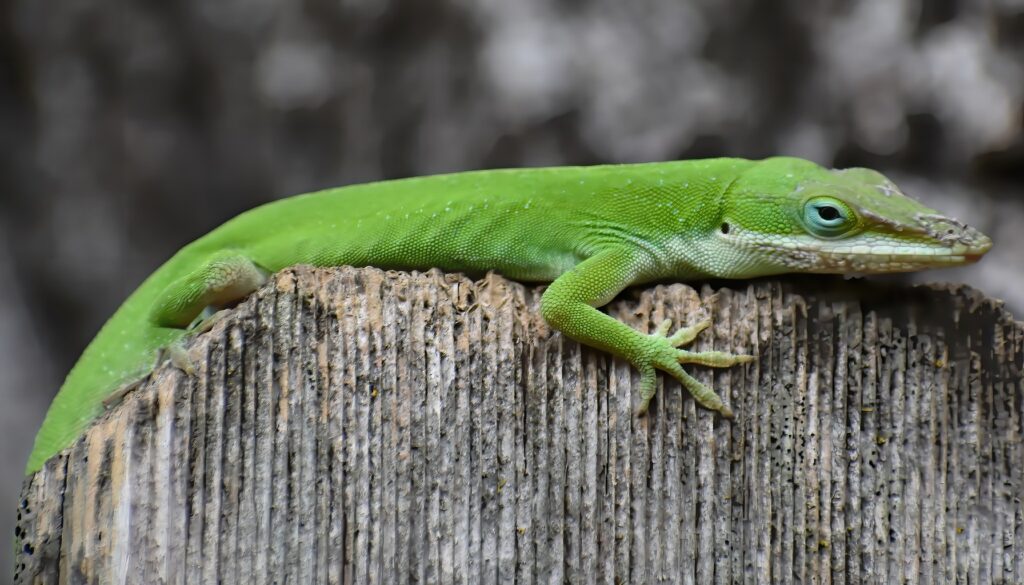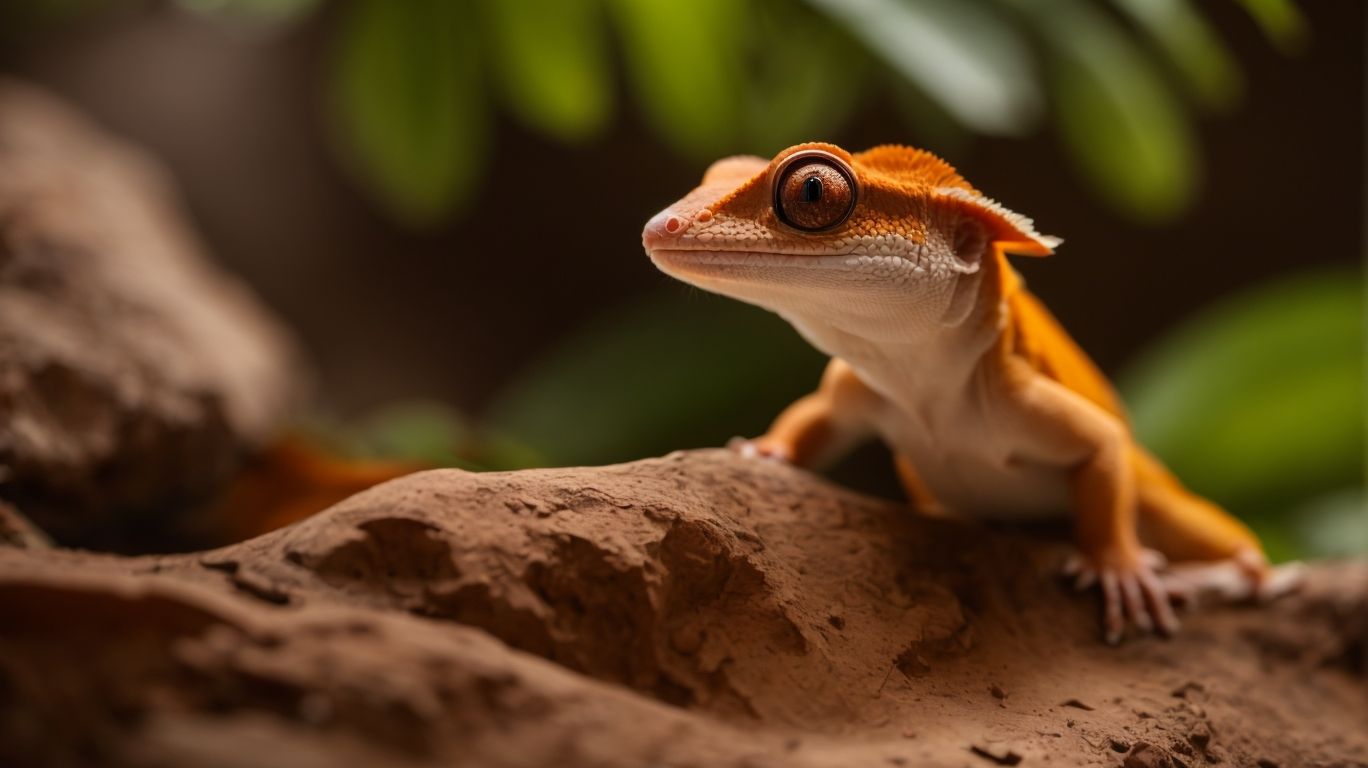
The Colorful World of American Chameleon Lizard
Table of Contents
A Peek into the American Chameleon World
Welcome to the mesmerizing world of the American Chameleon Lizard, also known as the green anole (Anolis carolinensis). Prepare to be captivated as we delve into the intricate details of this extraordinary creature.
The green anole is a fascinating reptile that inhabits the southeastern United States and parts of the Caribbean. Its natural habitat consists of lush, tropical environments, where it can be found perched on tree branches, blending seamlessly with its surroundings.
Despite its common name, it’s important to clarify that the American Chameleon is not a true chameleon. The name “chameleon” is often associated with its remarkable ability to change color, a characteristic shared with true chameleons. This misnomer may have originated from the lizard’s capability to alter its hue in response to various stimuli.
Over time, the American Chameleon has become a sought-after companion in the realm of pets, captivating enthusiasts with its distinctive traits. This captivating lizard has found its place as a beloved household pet.
Distinct Physical Features of American Chameleon
The American Chameleon boasts a range of distinct physical features that make it a truly fascinating creature. From its unique body structure to its specialized adaptations, the American Chameleon is a reptile like no other.
One of the most prominent features of the American Chameleon is its ability to change color. It uses this unique ability to communicate with other members of its species, as well as to regulate its body temperature. When the green anole is calm and content, it typically displays a vibrant green hue. However, when it feels threatened or stressed, it can change to shades of brown or even black. This color-changing ability is thanks to specialized cells in the skin called chromatophores.
In addition to its color-changing abilities, the American Chameleon possesses other notable physical characteristics. It has a long, slender body, and sharp claws that enables it to navigate its environment with ease. Its toes are equipped with specialized adhesive pads that allow it to grip onto various surfaces, facilitating its incredible climbing abilities. The chameleon also has a prehensile tail, which it can use to stabilize itself while climbing or to grasp objects.
Understanding The Behavior of American Chameleon
The behavior of the American Chameleon is truly captivating. These reptiles have unique habits and characteristics that make them a fascinating species to study and observe.
One of the most interesting behaviors of the American Chameleon is its territorial nature. Males are known to engage in elaborate displays to establish dominance and attract females. They bob their heads, extend their throat pouches, and puff up their bodies, creating an impressive spectacle. These displays not only intimidate potential rivals but also serve as a means of communication within their social hierarchy.
When it comes to their daily routines, American Chameleons are primarily active during the day, spending their time foraging for food and basking in the sun. They are agile climbers and are often found perched on branches, searching for insects to eat.
Despite their seemingly solitary nature, American Chameleons can be territorial and aggressive towards other individuals of the same species. They establish their own territories and will defend them vigorously against intruders.
Feeding and Nutrition of American Chameleon
When it comes to the feeding and nutrition of the American Chameleon, a varied diet is essential for their health and well-being. These fascinating reptiles are insectivores, which means they primarily feed on insects. Their diet typically consists of small prey, such as crickets, flies, and ants.
To ensure that your American Chameleon receives proper nutrition, it is crucial to provide a diverse range of insect options. This variety will help mimic their natural diet and ensure they receive all the necessary nutrients. Some popular insect choices include mealworms, waxworms, and small roaches. It’s important to note that all insects should be gut-loaded, which means they are fed a nutritious diet before being offered to the chameleon. This process ensures that the insects provide optimal nutrition for your pet.
In addition to insects, it is also beneficial to offer occasional fruit or vegetable treats. This helps provide additional hydration and fiber in their diet. Some suitable options include small pieces of papaya, banana, or leafy greens like kale or collard greens. However, it’s essential to remember that fruits and vegetables should only be offered in moderation, as chameleons have specific dietary requirements.
To maintain optimal health, it is crucial to dust the chameleon’s food with a reptile vitamin and mineral supplement. This helps ensure that they receive all the necessary vitamins and minerals that may be lacking in their diet. Additionally, providing a UVB light source is essential, as it aids in the synthesis of Vitamin D3, which is crucial for proper calcium absorption.
Remember to always provide fresh, clean water for your chameleon to drink. Misting their enclosure with water multiple times a day not only helps maintain hydration but also simulates rainfall, which is beneficial for their overall well-being.
Care and Husbandry of American Chameleon
Proper care and husbandry are essential when it comes to keeping an American Chameleon as a pet. These remarkable creatures require specific conditions to thrive and maintain optimal health. Here are some key aspects to consider when providing care for your American Chameleon:
Housing: A spacious enclosure is necessary to accommodate the chameleon’s climbing and basking needs. A tall terrarium with plenty of branches, plants, and hiding spots is ideal. Make sure the enclosure is properly ventilated and has a temperature gradient, with a warm basking area and cooler zones.
Temperature and Lighting: Maintaining the correct temperature and lighting is crucial for the well-being of your chameleon. The basking area should reach temperatures between 85-95°F (29-35°C), while the cooler zones should be around 75-80°F (24-27°C). A UVB light source is essential to provide the necessary ultraviolet radiation for proper calcium metabolism.
Humidity: Chameleons require a humid environment to support healthy shedding and hydration. Mist the enclosure at least twice a day to maintain humidity levels between 50-70%. A digital hygrometer can help monitor humidity accurately.
Handling and Socialization: American Chameleons are generally not recommended for extensive handling as they can become stressed. However, gentle and brief handling can help with socialization and habituation. Always support the chameleon’s body and avoid excessive handling or grabbing the tail.
By providing the appropriate care and husbandry, you can create a thriving and healthy environment for your American Chameleon. Remember, each chameleon is unique, so observe their behavior and adjust their care as needed. With proper care, your American Chameleon can live a long and fulfilling life as your fascinating and captivating companion.
Common Health Concerns in the American Chameleon and How to Address Them
Just like any other living creature, the American Chameleon is susceptible to certain health issues. While these reptiles are generally hardy and resilient, it is important to be aware of common health problems and their potential solutions.
One common health issue that American Chameleons may face is respiratory infections. These infections can be caused by factors such as inadequate humidity levels or exposure to drafts. Symptoms may include wheezing, labored breathing, and nasal discharge. To address this issue, it is crucial to ensure proper humidity levels in their habitat and eliminate any drafts. If symptoms persist, consulting a reptile veterinarian for appropriate treatment is essential.
Another common issue is metabolic bone disease (MBD), which occurs when the chameleon’s calcium and vitamin D3 levels are imbalanced. Signs of MBD include weakness, tremors, and softening of the bones. To prevent MBD, it is important to provide a proper UVB light source and a calcium supplement. Additionally, a balanced diet rich in calcium and vitamin D3 is crucial.
Parasites, such as mites or worms, can also affect American Chameleons. Regular veterinary check-ups and fecal examinations can help detect and treat these infestations. Maintaining a clean and hygienic enclosure, as well as providing proper nutrition, can also help prevent parasite infections.
The American Chameleon as a Pet
As captivating as the American Chameleon Lizard is, it’s important to consider whether it is suitable as a pet. While these reptiles can be fascinating companions, they require specific care and attention to thrive in a domestic setting.
First and foremost, it’s crucial to provide the American Chameleon with a suitable habitat. A spacious enclosure with proper ventilation, temperature gradients, and humidity levels is essential. Creating an environment that mimics their natural habitat will help ensure their comfort and well-being.
When it comes to feeding, American Chameleons are insectivores, which means their diet primarily consists of insects. Providing a varied and nutritionally balanced diet is important to meet their dietary needs. Gut-loading insects and providing appropriate supplementation are also key aspects of their nutrition.
Handling and socialization should be approached with caution. While some chameleons may tolerate gentle handling, excessive stress can negatively impact their health. It’s important to respect their need for privacy and avoid excessive handling.
Regular veterinary care is crucial to ensure the health and longevity of your American Chameleon. Finding a reptile veterinarian experienced in caring for chameleons will help catch any potential health issues early and provide appropriate treatment.
In conclusion, while the American Chameleon, or “green anole” (Anolis carolinensis), can indeed make a captivating pet, their care requirements are specialized and should be meticulously considered and adhered to for their optimum well-being. This unique and fascinating creature, with proper care, can provide an unparalleled interactive experience for any reptile enthusiast.
Related Posts

Incubating Crested Gecko Eggs: Essential Techniques and Tips
Crested geckos are fascinating reptiles that are known for their…

Red Crested Gecko Health: Common Issues and Preventive Care
Are you a proud owner of a red crested gecko?…

Creating the Ideal Environment for Your Red Crested Gecko
Do you own a red crested gecko or are you…

No Comments